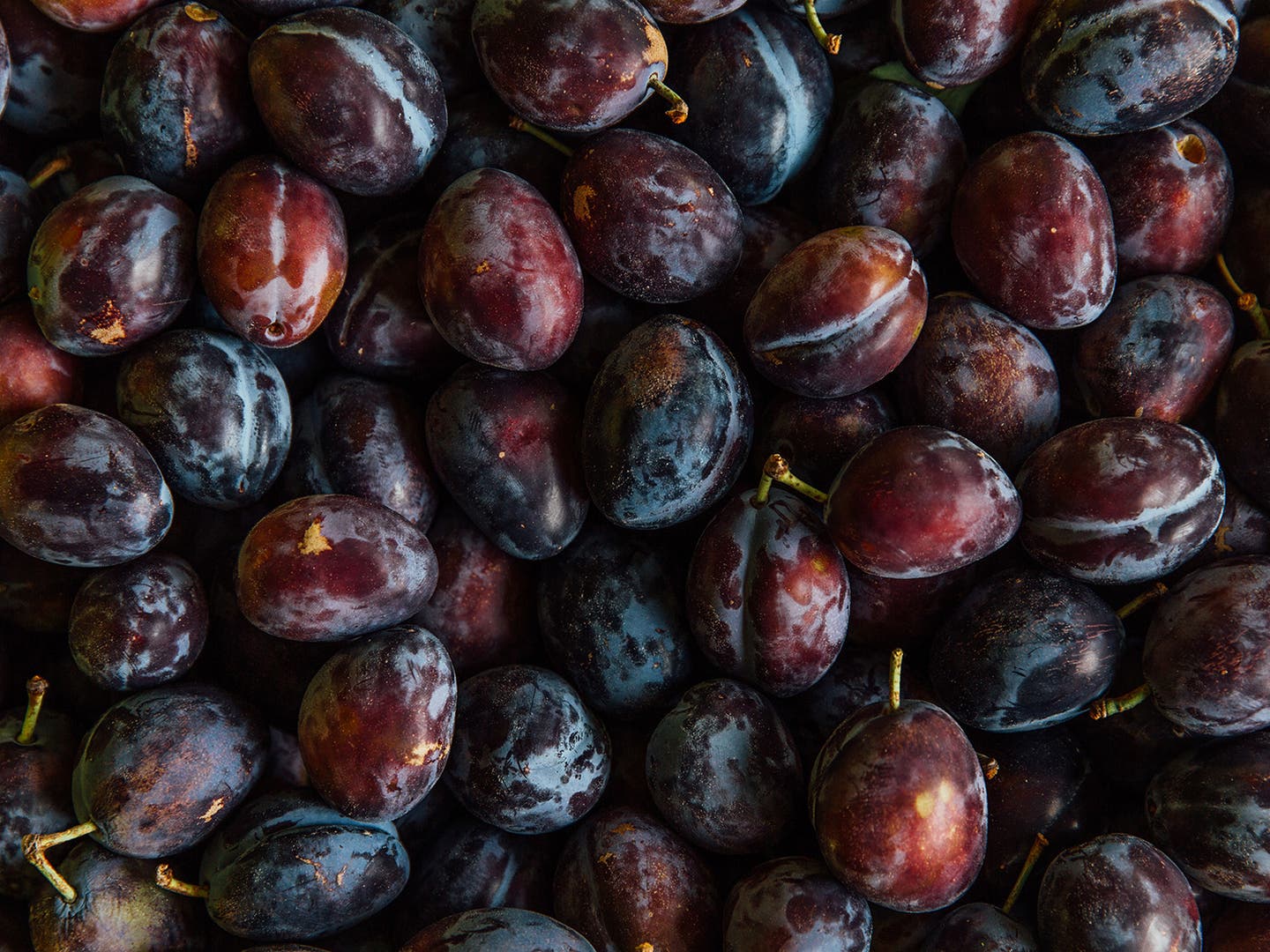
This Orcas Island Jam Company Transforms Local Plums into Vibrant Seasonal Preserves
Girl Meets Dirt is on a mission to save the island’s legacy fruit trees and jar their bounty
If you’re driving the winding roads of Orcas Island in late summer, you can smell the ripening fruit all around. On one such morning last year, I stopped the car at my destination and met Audra Lawlor, owner of Girl Meets Dirt, who was surveying one orchard’s recent Italian plum harvest in tall rubber boots and a denim shirt. As we walked among the rows of trees with their full canopies spilling over onto the trail, Audra picked up a fallen plum from the ground and turned it over in her hand between us. “Before I got here, most of the fruit from these trees would have rotted on the ground,” she says. Lawlor and her team of five mighty women at Girl Meets Dirt harvested more than 2,500 pounds of Italian plums alone last season.
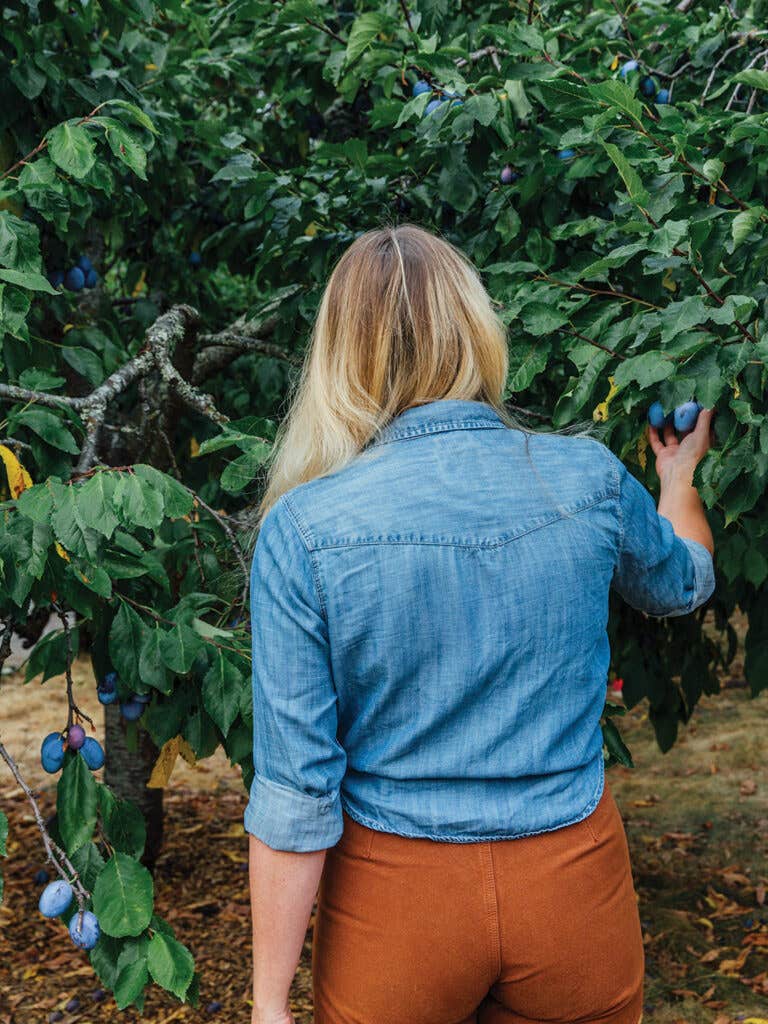
Some people leave their corporate jobs to rescue animals. Audra left Wall Street to rescue pink pearl apples and Orcas pears. Today, many of the island’s residents see her as the steward of the legacy fruit trees on the island, a 57-square-mile piece of the San Juan Islands, an archipelago that lies in the waters between Seattle and Vancouver, just barely on the U.S. side of the border.
Orcas owes its long history of orchards to the area’s unique climate. Known as Washington’s “banana belt,” and also called the Olympia Rainshadow Zone, this area is protected from excess rain by the Olympic Mountains, Vancouver Island, and the Cascades, and it enjoys more sun annually than mainland coastal Washington. Lawlor likens it to Northern California in its ability to sustain crops.
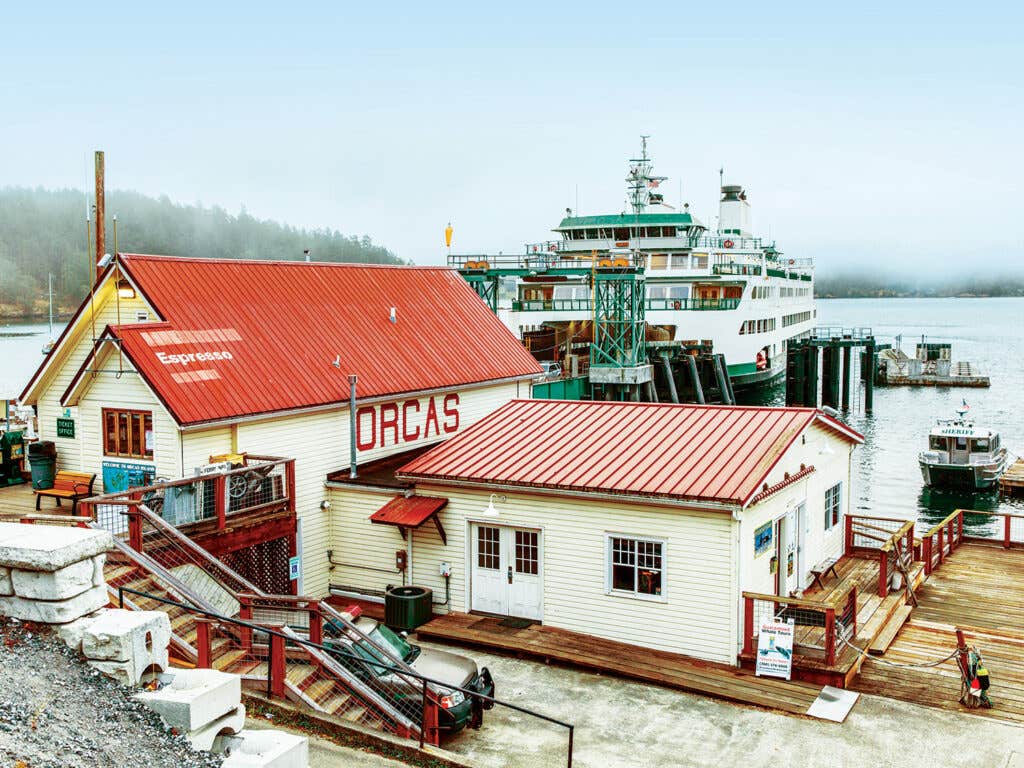
It was horticulturist E.V. Von Gohren in the late 1870s who first proclaimed the climate ideal for growing Italian plums, better known to the locals as prunes, because that is what most of them eventually became. The mild climate and rich soil encouraged settlers on the island to plant nurseries of these plums, along with apples, pears, and, by some records, up to 20,000 total fruit varieties, from apricots to cherries and berries. But the Italian plums had the prized seeds, the trees bearing them deemed to have the greatest commercial potential at the time.
By the end of the 19th century, many inhabitants had made their way over to work the plum orchards and operate the prune dryers (barnlike structures where the fruit was set to shrivel up), and the economy was surging. The success allowed the building of docks for steamships, as well as a boon for jobs sorting, grading, and packing fruit for transport. It also led to an island that became far more orchard than anything else. The country lane that runs through the center of Orcas Island’s main village is still named Prune Alley.
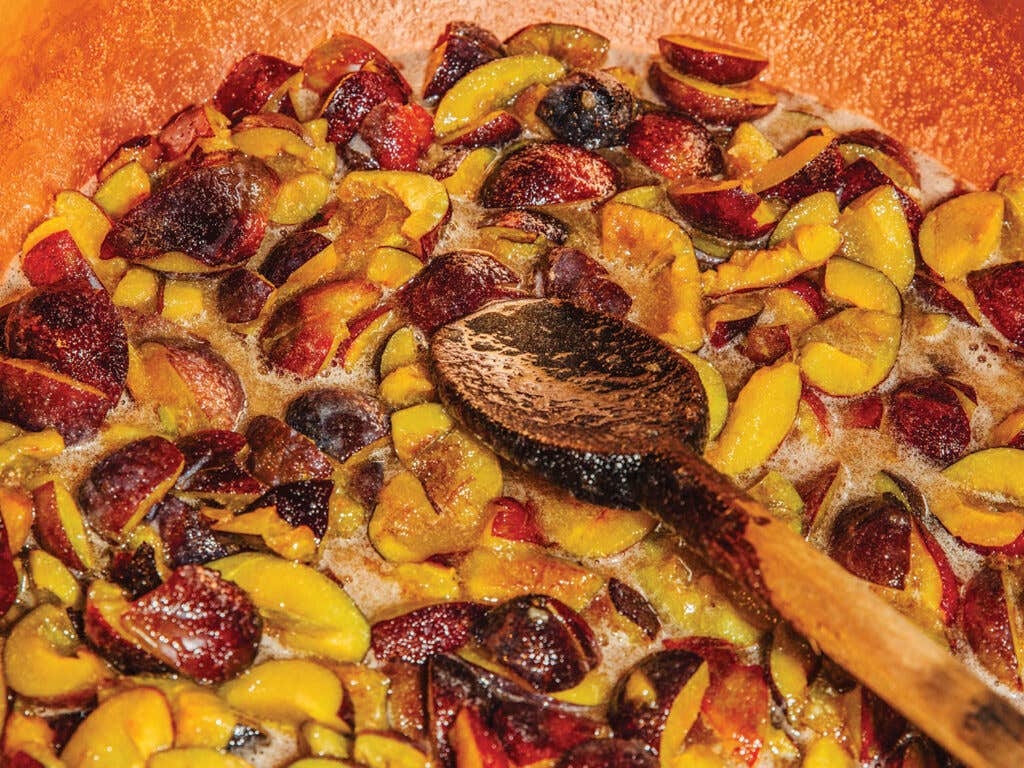
Get the recipe for Plum Paste (Plumbrillo) »
Get the recipe for Plum Shrub » Amber Fouts
Many of the legacy fruit trees—entire orchards of them—fell into disrepair during a period of economic downturn around 1915. It was in part due to the rise of railroads, improved irrigation, and heavy planting in nearby eastern Washington, which became a fierce competitor. Islanders began to ignore the fallen fruit, and tree limbs weakened with overgrowth. Thousands of trees were left to die, and the plum industry collapsed. It wasn’t until decades later, when the island began attracting new residents—those who sought out the area for its bucolic landscape—that the trees gained new stewards. Today, Lawlor and her company are working with fellow islanders to revive and utilize those trees that remain.
Raised in Washington, Lawlor spent years working in New York City but always knew she would one day return to the Pacific Northwest. The San Juan Islands were her fantasy destination, but the move never seemed practical. That is, until 2011, when she left her lucrative but hectic job with her husband and two dogs to go full-on Green Acres. The couple bought a farmette on the secluded island, determined to live a simpler life. “I didn’t have a plan,” Lawlor says. “I just knew I wanted to get my hands dirty.”
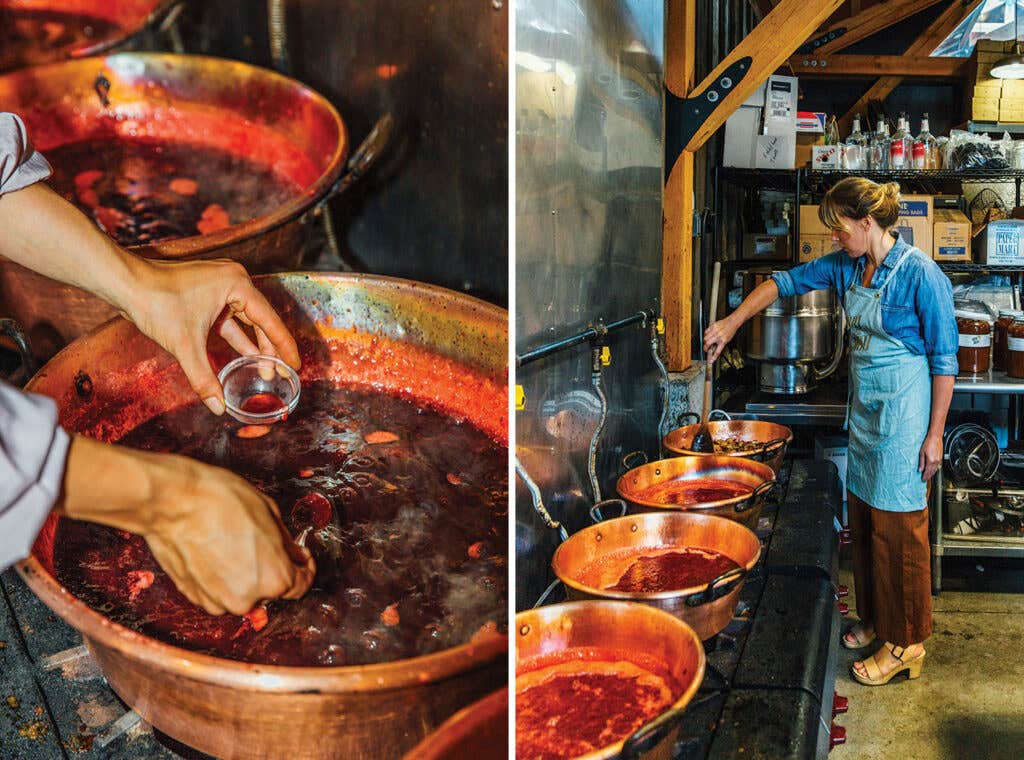
It was in those early days that Lawlor found a passion for fruit. During her first fall season on the island, the seven fruit trees on her property bore more than 200 pounds of apples and pears. She began making pies and jams but quickly found her kitchen filled with yet more fruit—quince, crab apples, and plums—as her new neighbors welcomed her with edible gifts. "I fell in love with the sense of abundance on my property, and all around me on the island. I wanted to learn more," she says. She turned to a local cookbook club for education, camaraderie, and inspiration.
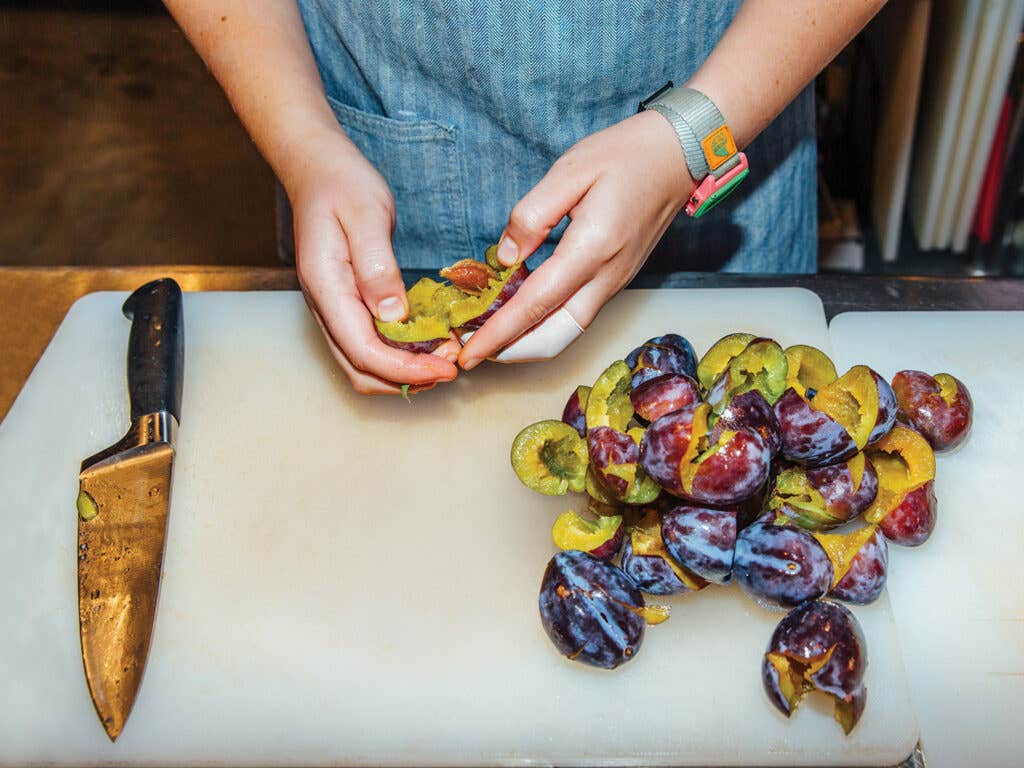
Come Thanksgiving 2013, Lawlor found her kitchen filled with boxes upon boxes of homemade preserves she had taught herself to make. At the urging of family and friends, she created Girl Meets Dirt to do something productive with her newfound hobby. She began producing handmade, organic preserves from the island’s century-old trees, and selling it locally under the small label.
As her business grew over the years, so did the need for more fruit and other flavors. But rather than purchasing it from commercial farmers, Lawlor decided to take a more community-minded approach and build win-win relationships with local residents. "Some people don't even know they have [fruit trees] on their property," she says. She didn't have to go far to find her first stewardship arrangement; it was right next door. The 5-acre farm was covered with overgrown, untended Bartlett pear trees, prompting Lawlor to approach the farm's owners, Dale and Marcia Gillingham, about helping. "It started with a casual 'use our fruit' relationship, and then over the years, I offered to start taking care of the pruning in winter just to give something back," she says. "They were never farmers or commercial growers; they just happened to have bought property with a lovely old orchard on it and are glad to see the fruit being used." Since then, a few local farmers have offered to sell her items—tomatoes, peppers, and local herbs, including sage and rosemary, and chamomile, which she uses in her jams and products.
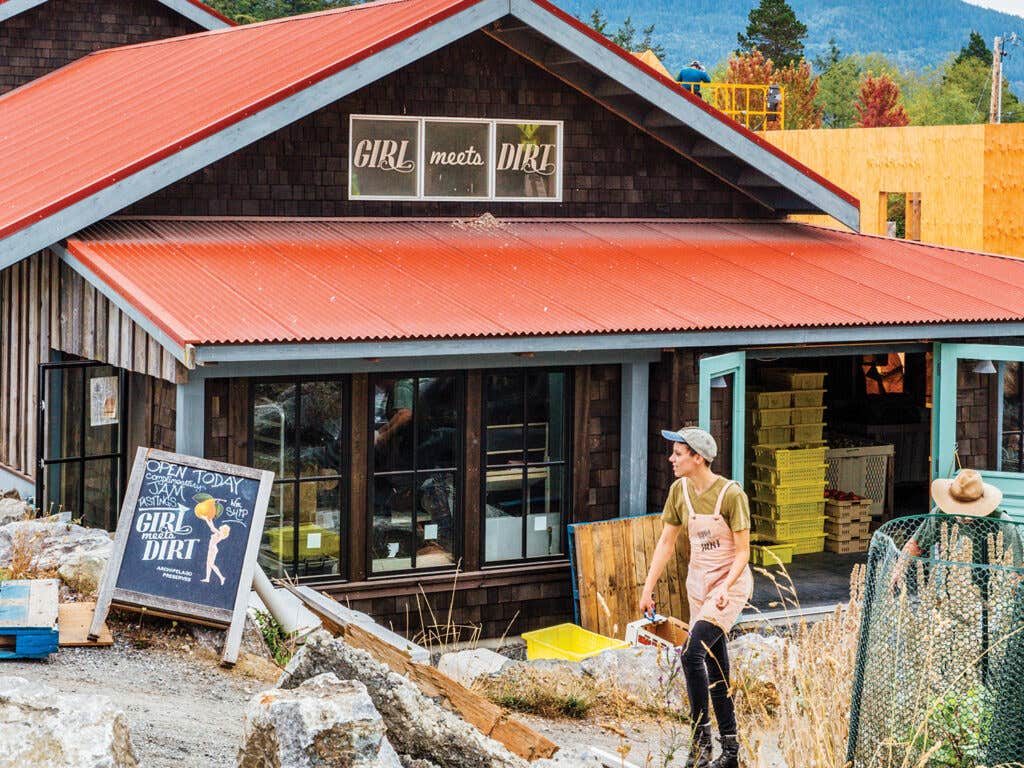
Lawlor's approach is "to make the most of what trees are still here." She adheres to the practice—as in the nose-to-tail movement—of using all parts of the ingredient. This year, she began processing the pits, bark, and leaves of plum, apple, and fragrant peach trees and fruits (and a little alcohol) to create "tree bitters," which she barrel-ages using either bourbon barrels from Washington distilleries or spent local apple-brandy barrels. The latter relationship led to her creating her first batch of apple brandy in 2019, in partnership with Orcas Island Distillery.
Lawlor trades with up to 100 people each harvest season, including those on neighboring islands, whose fruits arrive by ferry. “Often, people just show up at my door with boxes of whatever they have,” she says, “and sometimes they just want to trade it for some preserves.”
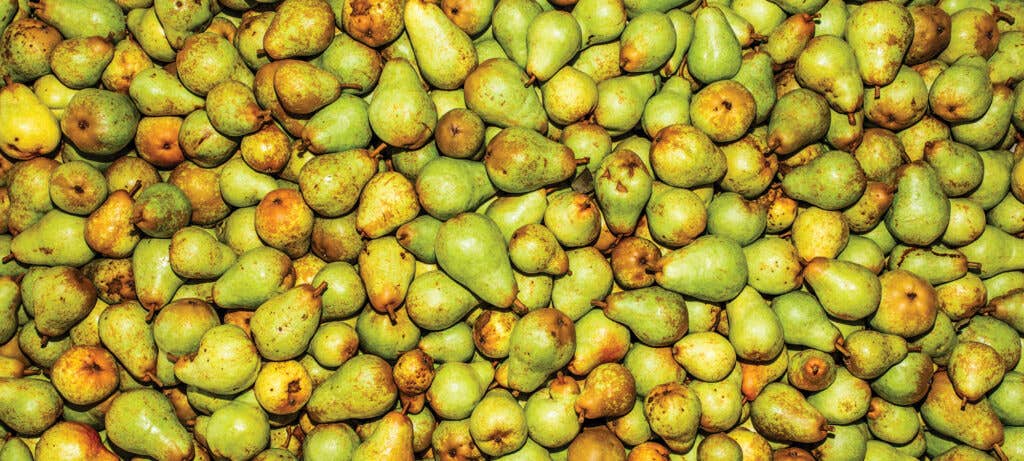
The Girl Meets Dirt commercial kitchen is more reminiscent of your grandmother’s kitchen than that of a finely tuned business that sells and ships handcrafted preserves around the nation. In summer and fall, dozens of rustic crates teeming with reds, purples, and greens are stacked ceiling high, creating a maze of narrow passageways for Lawlor and her team. Large copper pots sit atop expansive burners that line an entire wall. There’s little prep work required; Lawlor boils the fruit with the skin still intact to take full advantage of the peels’ natural tannins, pectin (which thickens juices so they set into jams), and full flavors.
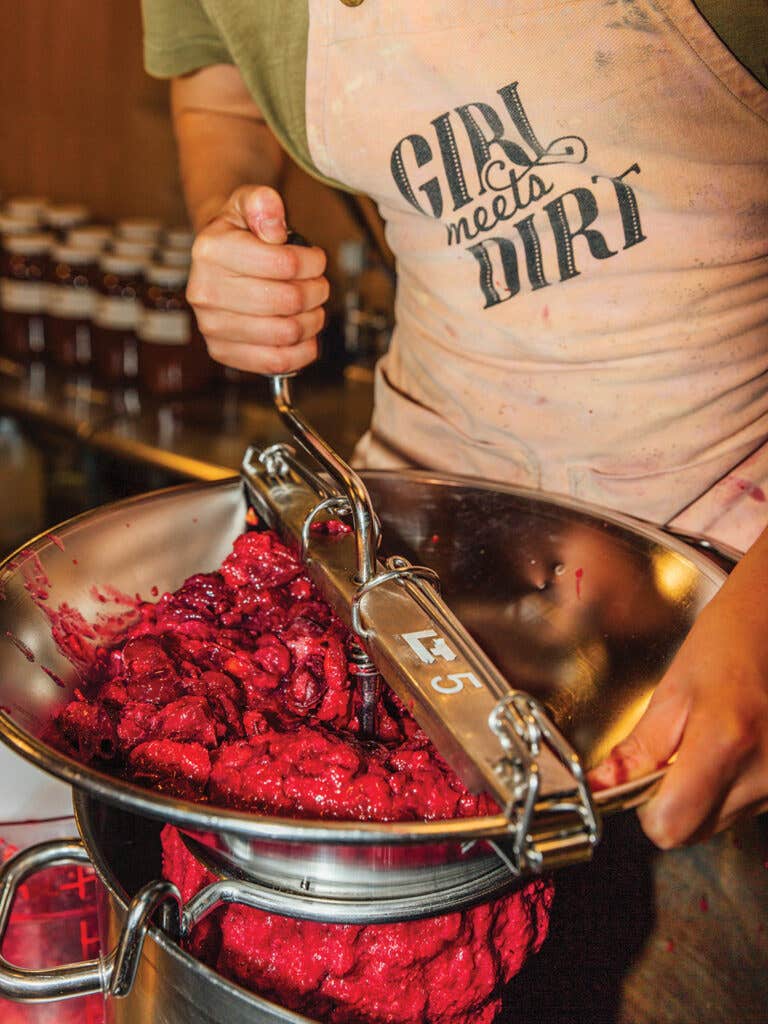
The team uses a classic French confiture technique to create their spoon preserves. It starts with a quick, high-heat cook in broad-bottom copper pots to remove water from the fruit as quickly as possible to fortify the fruit's essence. The cooks will then macerate the fruit with sugar for 24 hours to concentrate and sweeten the flavors. Finally, they'll cook the fruit slowly until it's broken down into pieces and suspended in a clear, thickened syrup. Some preserves are inspired by Lawlor's travels. In Spain and Argentina, she encountered dulce de membrillo (a prized quince paste), and now makes a plum version inspired by it. Once the ripe, purple fruit—some from trees nearly 100 years old—is cooked, it's hand-milled and simmered slowly into a concentrated spread, perfect for cheeseboards or slathering on toast.
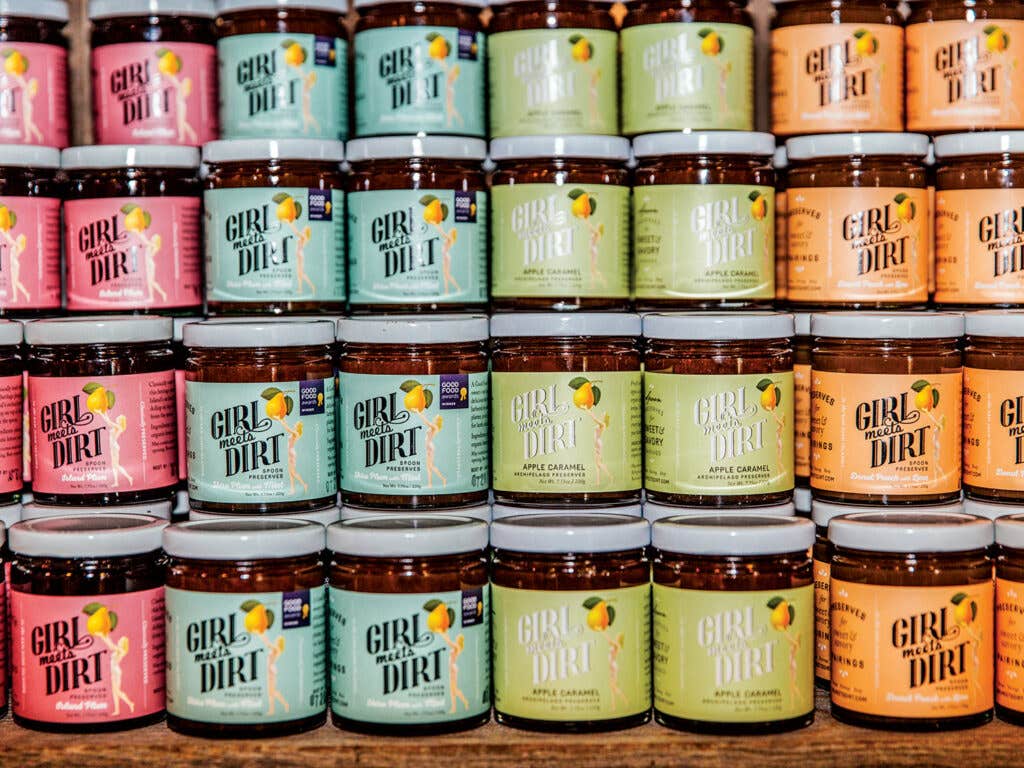
As we talk over the sounds of the busy kitchen, Charles West of Orcas Island Distillery stops by to check on a recent collaboration. “How is the pear situation going?” he asks. Lawlor responds: “I can’t process them fast enough. But what’s urgent right now is rotting plums,” she says, indicating her need to get back to her kitchen. Before long, the copper pots are gurgling with deep-purple juices.
Her relentless, ever-growing enthusiasm for the region and its community, and for putting its bounty to use, is as pure as the products Lawlor makes. “The very challenges of the island,” she says—of its particular weather, the island’s rhythms, and keeping up with fruit bursting from tree limbs—“are also the things that make it romantically ideal, and intriguing. Our difference is the fruit we use,” she adds, pausing, “and all the ways we get it.”
Keep Reading
Continue to Next Story










